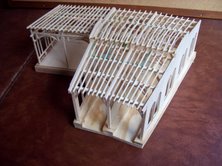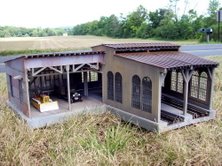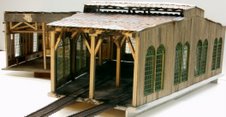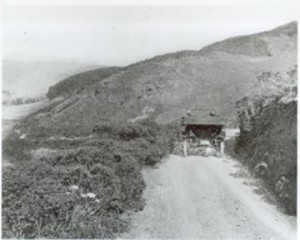
Edgemar, (Pacifica): Globe Wireless Transmitter
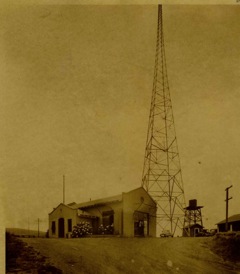
The View from Pedro Point
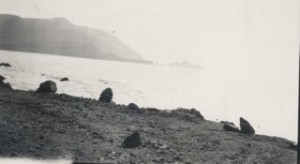
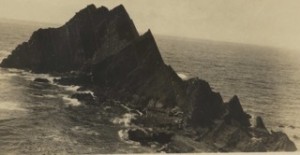
Lumbering Legends: Grabtown & Gordon’s Chute…
New-old story by June Morrall
[I wrote this in 1977]
[Image below: Gordon’s Chute from “The Illustrated History of San Mateo County”]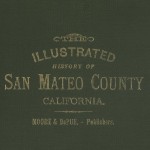
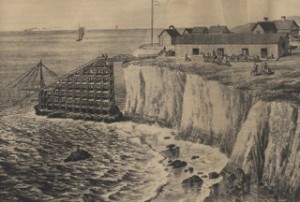
Friends who heard rumors that a new toll road promised to link Woodside with Kings Mountain (high atop Kings Mountain Road) delivered the good news to Eugene Froment in 1867. They pointed out that future plans included extending the road to the Coastside. Froment, a native of France, who had recently logged in Santa Clara County, wasted little time before he invested his money near the picturesque Tunitas Creek south of Half Moon Bay.
While the prime timber land he bought dipped a thousand feet or more into the dark canyon, his property included 750 acres of redwoods which stretched for two miles toward the coast. At the same time Borden and Hatch logged the neighboring Purisima Canyon, Eugene Froment set up a shingle and steam powered sawmill near where Tunitas Creek meets Mitchell Gulch.
Inside the sawmill, measuring over 100 feet in length, visitors described two large circular saws, one mounted above the other. Here company employees, who numbered as many as 25-30 men, sometimes used blasting powder to split apart huge logs. After a long work day covering 11 hours, the mill turned out 18,000 feet of lumber. Most of this wood probably helped build the booming city of San Francisco.
By this time teamsters who hauled timber from forests near the mountain top, regularly traveled from the summit to the port of Redwood City, returning by nightfall. But Froment’s Mill stood further away in the isolated Tunitas; hauling through a roadless canyon was expensive.
When the new toll road failed to reach his mill, Froment formed his own turnpike company to cut hauling costs. A crew cleared the dense jungle of trees and built a road. But just as the toll road reached Smith Downing’s barnyard, a half mile from the coast, the company ran out of funds.
The men who drove for Eugene Froment spent a strenuous day hauling two heavy wagon loads of lumber, one at a time, from the mill to the summit. Here Froment built the Summit Springs Hotel as a stopover for these drivers.
But the majority of them preferred to rest near the Froment Mill office which stood at the top of the grade on a narrow ridge (between the headwaters of the Purisima and Tunitas canyons). The teamsters parked their wagons here and hitched them together before leaving on the last leg of their trip the following day.
The popular practice of staying overnight near the mill office, instead of the Summit Springs Hotel, baffled Froment. Soon even a boarding house and stable appeared at the flourishing lumber camp.
Although Froment obviously owned the lands, many of his employees built makeshift homes there with scrap lumber. Some of these temporary shelters offered more comforts than others. So when a family vacated one of the better houses, another family immediately seized it.
Without much level land available, the residents often liberated garden space from one another in the same manner. Up until that moment everyone called the camp, Gilbert’s, but soon a more descriptive name replaced it.
Early one morning as the Arnold family dozed peacefully, the sound of hammering rudely awakened them. When they peered outside their door, the Arnolds discovered a “neighbor” constructing a barn on what they formerly used as a vegetable garden.
The grabbing of land became viral, and somebody, believed to be one of the Arnold’s kids observed: “This place should be called ‘Grabtown.'” A place called “Grabtown Gulch,” a branch of Purisima Creek, apparently still appears on official maps.
After a good night’s rest at Grabtown, the drivers left for Redwood City in wagons pulled by glistening teams of horses. Their wagon wheels, with brakes set tight, easily slipped into deep grooves–long since worn into the dirt road–as they practically slid down Kings Mountain.
Any travelers, whose misfortune it was to head up the twisting road at that very moment were warned of oncoming traffic by the cloud of dust in the distance and the sweet jingle of bells worn by the horses. The clever traveler immediately veered to the widest spot in the road, patiently waiting for the procession to pass by.
Having to regularly travel over the big mountain was a tough way to do business, to deliver the lumber to the port in Redwood City. A Coastside railroad or sea route to San Francisco would have been more direct and profitable, believed Alexander Gordon, the owner of 1000 acres near Tunitas Creek. He thought a lot about building a port somewhere between Pigeon Point and Half Moon Bay. But the land Gordon owned was located at Tunitas, not the best choice for a port. Despite the extreme risks, he went ahead with the project, locating his unique shipping chute on sheer cliffs towering 150 feet above the Pacific Ocean.
Certainly observers labeled Alexander Gordon’s plan “crazy,” but Gordon remained optimistic. In his mind he visualized the lumberman Eugene Froment’s finished wood products and local produce sliding down the intricately constructed loading chute into a waiting steamer.
After toying with the idea, Gordon actually built the elaborate scaffolding, secured with wire cables that were connected to the rocks visible at low tide. When complete in 1872, sacks of potatoes and bags of grain stored in the warehouses above, slid down the 350-foot loading chute that could be lowered to the deck of vessels anchored beyond the surf.
But there were complications with “Gordon’s Chute.”
Ship captains would only approach the chute in fair weather–it didn’t make sense to tie up, in bad weather, to a reef at the unprotected site. And nobody realized that friction would cause the sacks of potatoes to burst open on the long way down the chute. The final blow to the success of Gordon’s Chute struck like a storm when a national depression severely hurt all businessmen.
Back at Froments mill, the lumber business appeared to prosper. Yet beneath the surface, the financial “depression,” combined with Froment’s increasing expenses, caused the company to suddenly fold. There was little fanfare when the San Jose Mill and Lumber Company took over the operation. They felled more trees from two to ten feet in diameter and by horse-and-wagon carried the finished product to the port in Redwood City. From there the lumber was shipped by rail to San Jose.
Not longer after both Froment and the San Jose Company filed for bankruptcy. Froment had owned an expensive home in Santa Clara but he now purchased an acre near the mouth of Tunitas Creek where he spent the last days of his life until he passed away in 1892.
Did Eugene Froment witness the fate of Gordon’s Chute. Probably.
While all along the sea worked overtime to undermine the chute’s wood framing, a severe southeast gale [which also damaged Loren Coburn’s chute at Pigeon Point] finished the job. According to reports, super-strength winds blew away the structure in 1885.
Alexander Gordon abandoned not only his famous shipping chute, but his nearby farm as well, moving to Redwood City where he opened a real estate business.
Next the Saunders brothers bought the Eugene Froment property. But when both brothers died within a month of each other, Clarence Hayward took over the shingle and sawmill. Hayward, whose father, Barzillai, operated a mill on Pescadero Creek, cleared out all the remaining timber, including one huge tree with twisted grain that other lumbermen had rejected. From this tree, which measured 16 or 17 feet in diameter, Hayward made more than one million shingles.
When Hayward completed his work, he sold the shingle mill to Borden and Hatch, who moved the operation into the Purisima Canyon. After fire destroyed the sawmill in 1907, the sounds of lumbering in the nearby Tunitas Canyon ceased—and all the inhabitants of “Grabtown” vanished, leaving no memories of their life there behind.
In 1913 mill owner John Dudfield finished his work on Pescadero Creek and he began searching for a new source of shingles. He finally settled on a small grove of redwoods in the once inaccessible Lobitos Canyon, where he found a foe in an early settler called W.S. Savage.
Savage had become a public advocate for the trees. He recalled that previous owners cut all their shakes, posts, pickets,and wood from this land, felling most of the biggest trees from 1860 to 1882. Since the 1880s the forest had returned to its original splendor and Savage now pleaded “for the last of the county’s giant trees.”
John Dudfield ignored Savage’s appeal and logged the small grove of redwoods until one day the mill suddenly shut down. Seven years later Dudfield returned, this time with “motor trucks” to haul the shingles to market. He did not quit until he was physically incapacitated by illness. Despite other logging operations in the area, virgin trees still flourish in the Lobitos.
———————
[Image Below: Leaving Tunitas, Ocean Shore Railroad Era. The driver of the Stanley Steamer i Joe Frye. The brakeman is Harry Staples.]
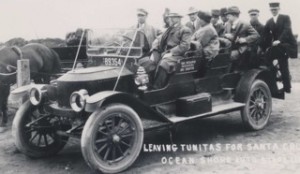
Hel-lo Coastside Mermaid & The Color Blue…
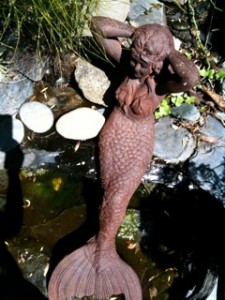

Tom & Julie Andersen Say: See Our Roundhouse Kits
Story by Tom Andersen
To visit Tom’s website, please click here
I liked the picture of the railroad yard in El Granada, looks like an engine house? Do you know where that was located? Any chance it is still standing?
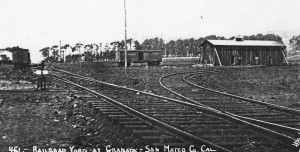
[June says: No the Ocean Shore Railroad yard no longer stands in El Granada.]
We spent the spring launching our Wolf Creek Roundhouse & Machine Shop kits, and have spent the summer shipping them. The Narrow Gauge & Short Line Gazette, published & edited by Bob & Irene Brown from Los Altos, ran a product review article on the kits in their July/August 2009 issue, along with our ad, and we’ve been non-stop busy ever since. Actually, we were already busy with filling orders as we had a number of pre-orders to fill, the first of which went to a fellow in Zurich Switzerland, who models the American Southwest.
There are almost no quality kits for roundhouses available, so we met a wide open market. There are a number of inexpensive plastic kits out there, but these are not of interest to serious modelers. Our kits are pricey, but in line with other craftsman quality roundhouses that have been released in the past. We are offering the kits in HO, S & O scales, and choices of two stall lengths, scale 70’ & 114’, so they can be used for old-timey smaller engines, or later periods when steam engines got huge. They also will work for narrow gauge or standard gauge, and are available with anywhere from two to thirty-five stalls. Besides the three scales mentioned, we also sold plans to a fellow who is building one in G scale, which is about 1/20th.
The attached photos are of a two-stall version with machine shop built by a professional model builder from Ohio, also a photo of the machine shop side wall from the builder in G scale. The model with the green windows is an O scale version we build as a proof of our instructions & drawings, which will be our display model at shows. The five-stall is our pilot model, built prior to writing instructions & doing the CAD drawings & assembly templates. It is installed on our Hon3 layout at home in El Granada, where we depict the fictional town of Wolf Creek in the San Jaun Mountains of south central Colorado. The picture with the pine trees is the 5-stall roundhouse on our layout, just inside Pine Hill Curve. Just to the right is C.C. Kays Blacksmithing & Steam Bending. We scratch-built the steam bending equipment to add to the blacksmith shop kit as the shop is named for Julie’s son, Charter Campbell Kays, who is the shipwright at the SF Maritime Museum. (He also knows how to do smithing, among many other things)
As we finish shipping the last orders in house, we are preparing to travel to Colorado Springs for the 29th Annual Narrow Gauge Convention where we will display our kits. We have a New Mexico style desert diorama with our adobe church, chapel, cantina & trading company, and a diorama with our roundhouse & machine shop. Attendance historically has been over 2000 people. We plan to make sales calls on hobby shops en route to see if we can expand on the fifteen shops that carry our products. Also, we plan to travel the old US highways searching for subjects for future kits. We also plan to collect rocks & dirt at Wolf Creek Pass in Colorado for use on our own layout, to give it authentic color. We depart September 12th & return September 28th.
We’re still taking time to have fun, caught the first Sunday matinee of Coastal Reps fantastic production of “Tommy”, and had a fantastic time August 29th listening & dancing to Joyce Grant & friends at Sam’s Chowder House. She puts on as spirited and enjoyable performance as heard anywhere! She does Sam’s once a month from 4-8pm on the last Saturday of the month, outside, next show September 26th.
Andersen Model Kits is my 7th business, and by far the best! We are meeting the most interesting, clever, & creative people in the modeling realm, both modelers and others in the trade. It is just fascinating! Not the geeky introverts expected, but largely people who are well accomplished in many aspects of life. Most are in a good, stable relationship, affording the renaissance that is high-quality modeling.
Hope you are having a great summer,
Tom & Julie Andersen
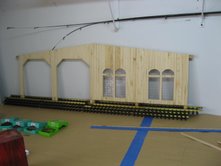
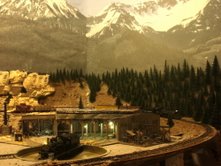
Up Against the wall with abalone
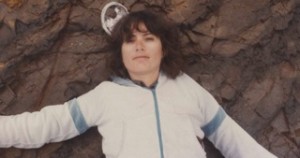
1925: Levy Bros. Holds Annual Big Picnic at Miramar Beach
From the “Half Moon Bay Review,” 1925
Levy Bros. To Hold Big Annual Picnic At Coast On Sunday
“The annual picnic of Levy Bros. department stores organization will be held on Sunday at Miramar Beach and promises to surpass in every respect all former picnics held under the auspices of the pioneer county mercantile firm.
“Frank Pease has been retained to preside over the barbecue pits and is now busy preparing a menu that will delight everyone. An orchestra will furnish music for dancing in the Miramar pavilion and an excellent program of contests, games and athletic events is being arranged.
“The picnic is tendered each year by the management to the employees and their families. Nearly 300 people are expected to participate in Sunday’s affair. A caravan of automobiles will leave the San Mateo store at 9 o’clock in the morning, carrying the fun seekers to the coastside resort.”
——————–
[Image: Josiah P. Ames built a long shipping pier at Miramar, then called “Amesport.”] 
The Dreams of Ellen Joseph–On Your Closet Door…
To see more of Ellen Joseph’s “closet mural” art, please click here
Visit Ellen’s website, featuring all of her creative work: http://ellenjoseph.com
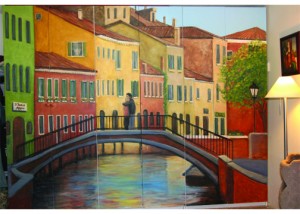
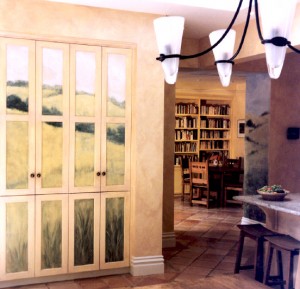
The Humor of Larry Kaplan: ART DUCKO…& You Can Have One, Too….
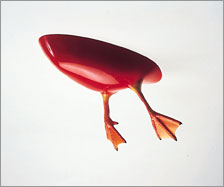

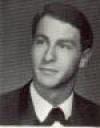 Story by Larry Kaplan
Story by Larry Kaplan
Email Larry: [email protected]
G’morning June…well, September… actually,
When you make time to do so…go to:
www.tapplastics.com, or please click here
once there, click on PRODUCT APPLICATIONS at the top of the home page.
The first photo you will see is a red duck. Click on it.
What the blurb does NOT say is that there are ducklings, racing ducks, rudder ducks instead of rubber ducks, pond guard instead of coast guard, diving ducks, ducks with heads peeking below the surface, and much, much more.SO much more. If you can think it, I can fabricate it. I have even created a black Lab swimming on the ceiling…chasing a group of ceiling ducks.
The red duck in the photo is an adult duck.
The point of view is that YOU are at the BOTTOM of a duck pond, looking UP at the surface activity…and my ducks are effortlessly installed on your ceiling…the ceiling becoming the plane of the pond’s surface…
I replicate NO particular species of duck because my ducks are cartoon in sculpture. They are WAY silly. They are hand made by me, each piece is signed, and I get requests from (litterally) all over the world.
Nuts; huh? Nuts is a good thing. Note: “NUTS” is used herein as a description of my persona. NOTHING else!
L.
(who woulda thunk that building hundreds of surfboards in the old daze woulda culminated in the creation of gorgeous fiberglass ducks?)
PS:…EAT.

